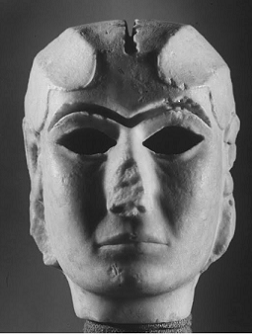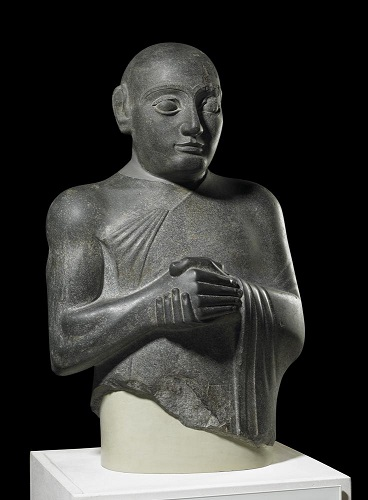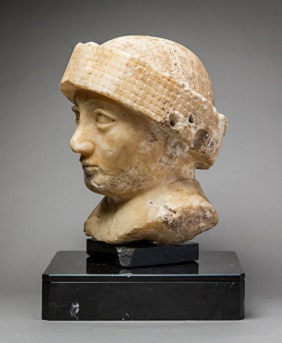1. Introduction
Location, Chronologies and Periods
They called themselves the black headed people and they lived in the Ki-En-Gi (Land Lord Civilized.) Much later in time, when the Akkadians ruled the region, their land was called Shumeru. In our time we had no knowledge of the black headed people although there were vague references to an unknown land called Shinar in the Old Testament.

Dating of artifacts, reigns of Kings and actual historical events in ancient history is imprecise and uses relative dating; using the known time of one event to infer the time of another event. Occasionally astronomical events are mentioned, such as solar eclipses or the movement of Venus and these events can be precisely dated. Today there are two dating systems in use for Mesopotamia which vary by some 64 years; the middle chronology and the low chronology. Recent efforts to clarify dating involve using radiocarbon dating of tree rings generally supports the middle chronology. I’ll use the middle chronology for dating events; when there are date ranges I tend to use the oldest date since since archaeologists in general are very conservative and tend to understate their conclusions.
Just as there are competing and conflicting Chronologies there are conflicts in dating periods of history. I’ll use a general classification of periods in order to simplify this presentation.
-
- Ubaid (6500-3800)
- Early Uruk 4000–3500 BC (Ubaid/Sumer)
- Late Uruk 3500–3000 BC (Sumer)
- Jemdet Nasr period 3200–3000 BC - Early Dynastic 3000–2350 (Sumer)
- Akkadian Empire 2334–2154 BC (Akkadian)
- Ur III 2350-2004 (Neo-Sumerian)
Origins
While the southern region of Iraq was settled by humans as early as 6500 BC the Sumerians existed here as a people and a culture from about 4500 BC. Their language is a ‘language isolate’ unrelated to any known tongue. Today there is a general assumption that the Sumerians were not native to Southern Iraq and they must have migrated from somewhere else. Throughout 1500 years of Sumerian cuneiform tablets there is not a single mention of this idea – that the Sumerians originated in a different land. It is most likely that the Sumerians originated in ‘the black headed people’s land.’ This idea is stated by Jeremy Green in his Illustrated Dictionary of Gods, Demons and Symbols of Ancient Mesopotamia:
| They had no tradition of having come to that region from elsewhere and, although the archaeological evidence is not absolutely conclusive, there seems no reason necessarily to assume that they were not the descendants of the earlier, prehistoric peoples of Sumer. |
Speculating that the Sumerians were a nomadic tribe following herds of animals who decided to settle down and farm people ask; ‘Where did the Sumerians come from?’ To explore that question there are two clues to follow. The first clue comes from Sumerian epics dating back to 2100 BC. These tablets refer in a most reverent way to the city of Aratta. In these epics Aratta is referred to as ‘respected,’ ‘important,’ 'weighty' and 'holy Aratta." And one epic, Enmerkar and the Lord of Aratta, has the Sumerian King Enmerkar persuading Inanna (the primary Sumerian Goddess throughout all their history) who is living in Aratta to move to Uruk. Obviously if Inanna herself is living in Aratta it must be someplace special! This deep attraction and affection for Aratta has led some to speculate that Aratta may be the origin of the Sumerians And while they did not provide GPS coordinates they did tell us how to get there!

In that epic, Enmerkar and the Lord of Aratta, Enmerkar sends a messenger to Aratta who travels to Susa, Anshan, and "five, six, seven mountains" before approaching Aratta. Additional clues throughout these epics say Aratta is remote and difficult to reach, is accessible to Uruk by water, is a fabulously wealthy place full of gold, silver, lapis lazuli and other precious materials as well as the artisans to craft them.
Susa is on the west side of the Zagros Mountains and borders Sumer. In Sumerian times this land was called Elam and was a constant enemy. Sumer and Elam fought never ending wars throughout their history and Elam was instrumental in the destruction of Sumer in 2004 BC. In 1973 Anshan was confirmed to be the modern day city of Tall-e-Malyan, Iran.
Looking at the map we can travel from Uruk to Susa to the city of Anshan and then we’ll only have "five, six, seven mountains" before reaching Aratta. Since Aratta is accessible by water it is likely on a river which flows into the Persian Gulf. Estimating exactly how many miles "five, six, seven mountains" is is only a guess but 125 miles from Anshan would place Aratta on the middle portion of the Maud River.
Traveling 500 miles from Anshan would place Aratta on the Kul River which empties into the Persian Gulf at the Straits of Hormuz. One of the epics, Lugalbanda in the Mountain Cave, has Enmerkar and his army traveling through mountainous territory to wage war against Aratta. The land route from Uruk in 2700 BC through the Zagros Mountains would be nearly impossible with an army. But by sea it could be done; the Sumerians routinely used reed boats on the Euphrates and Tigris Rivers and these boats would have been suitable to transport an army via water to the mouth of the Maud or Kul River and then march inland through the mountains to Aratta. The Dasht River in Pakistan is 870 miles from Uruk by sea; Pakistan would likely be a good location for a trading outpost to Afghanistan, the source for the highly coveted lapis lazuli, but since this is not a mountain area it would not be the location of Aratta.
The other clue we have with regard to the 'Sumerian Question' is simply, 'What did they look like?' Most early depictions of Sumerians are very crude since they are carved in stone on a small 4 inch cylinder seal. They show a standardized Sumerian without any regard to individual features other than clothing. However there are some statues from the Early Dynastic Period. And, by 2100 BC the Sumerians had developed 'realism' in their art and we have quite a few depictions of their facial features.
 |
 |
 |
| Mask of Warka 3100 BC - perhaps world's oldest face |
Sumerian Worshipper |
Early Sumerian |
 |
 |
 |
| King Gudea of Lagash - green dolerite British Museum |
Gudea of Lagash 2140- 2120 BC |
Face of Unkown Sumerian |
If Aratta is located in modern day Iran and if the Sumerians came from Aratta they would be what today we call Caucasian. The country's name was changed from Persia to Iran in 1934 by Reza Shah Pahlavi but the term Arya has been used by the Iranians from the time of the Avesta about 1000 BC. These are the same ethnic people as those of Armenia and Georgia in the Caucasus Mountains. While it would not be considered conclusive by itself DNA analysis on Sumerian skeletal remains would help answer the 'Sumerian Question'. But, we don't have Sumerian genetic material. A DNA analysis from the Indus Valley Civilization showed a telltale mixture of ancient Iranian DNA and this has led some to speculate a close connection between the Harrapan civilization and the Sumerians. We know there was substantial trade between the Sumerians and the Indus Valley Civilization, perhaps more than just trade?
This is all speculation but what we do know indicates the Sumerians were not African or Arab or Asian.
